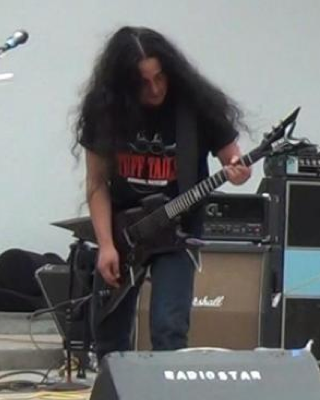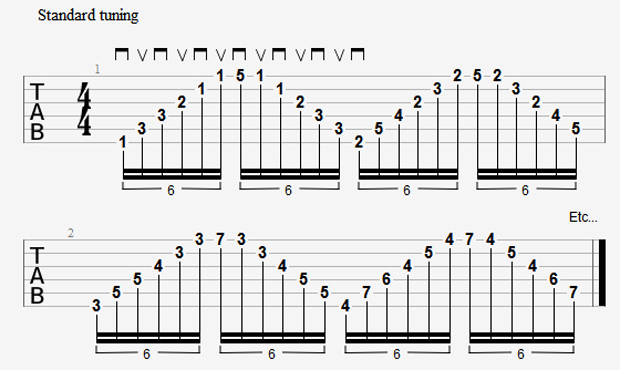Fretboard Mechanics & Beyond: A Guide to Alternate Picking, Part 1

I've received numerous requests for lessons on picking. People often ask me, "How can I improve my picking?" What they usually mean by this is, "How can I increase my picking speed?"
This is a very tough and touchy subject. While picking speed is an important aspect of playing, another trick in your bag of tricks, so to speak, it is in no way a be-all-to-end-all in a musician's repertoire. See the change of words? Guitar player vs. musician.
I believe, though, that picking accuracy is extremely important no matter how fast you want to play.
There are some incredible pickers out there. I don't need to mention their names. There are even more out there who we haven't heard of. The bar of fast picking has been raised in strides lately, especially in the rock genre since the '80s, when most of us became aware of the technique.
How did that happen? How did some of us get to a level of fast picking? One thing in common, I guarantee, is hours and hours of practice. That and breaking the technique into small, reachable goals and teaching your muscles where to go and what to do.
There are plenty of mechanics that go into the art of picking. Do you use your arm to pick? Your wrist? How do you hold a pick? There is no right or wrong way as far as using your arm or wrist — or how a pick is held. You have to listen to how your body wants to accomplish this goal.
The main key is synchronization between your picking hand and your fretting hand. One pick stroke gets one fretted note. If you have a three-note sequence, you need to play one pick stroke and move your fret-hand fingers to the proper note in the time to fret the note in the same time of the pick attack. Sounds simple? In theory, it is.
All the latest guitar news, interviews, lessons, reviews, deals and more, direct to your inbox!
We also have to pay attention to what type of pick stroke we are starting the phrase with. If we start with a down stroke in our three-note sequence, we will have a down stroke on our first note, an up stroke on the second note and a down stroke on our third note. For those who aren't familiar with the terminology, it's that golden two-word phrase: "alternate picking." You are alternating picking strokes. Down, up, down, up, etc. Or up, down, up, down, etc.
Example 1 demonstrates alternate picking in its simplest form. This is a very good exercise to start out with, regardless of your skill level. This breaks it all down to the basics. Start with a down stroke and alternate the picking strokes. Slowly!

In Example 2, try doing the same, but try to fret the shown notes, making one pick stroke for each note. This is helping you work on synchronization between both hands. Again, start out very slow!

In Example 3, you'll be barring an F major chord and alternate picking each note. Move the chord around or use your favorite chords to do this picking exercise. The most important thing to remember is to hit one note per string using alternate picking.

The final example is a little more entertaining. Exercises can get boring without sounding musical, right? You'll notice this is more of a classical-sounding progression. This time, you are not barring the chords. Fret each note individually. For your fretting hand you'll use these fingers in sequence: First chord: 1, 3, 3, 2, 1, 1, 4, 1, 1, 2, 3, 3. Second chord: 1, 4, 3, 1, 2, 1, 4, 1, 2, 1, 3, 4.

Again, when you start out on all examples, start slowly. See how it feels to slowly synch up you picking hand and fretting hand. Gradually build speed. Push a little bit then back down from a speed at which you start to lose control. The main key is to be 100 percent in control. In the future, I'll add more articles to help your picking!
Geoff Unger is the guitar player and vocalist for three-piece, NYC-based metal band Symptom 7. A graduate of Berklee College of Music, Geoff studied jazz arranging and composition while under the tutelage of Jon Finn. Geoff also has appeared in Mike Varney's Hometown Heroes. A multi-styled guitar player, Geoff regularly performs live with Symptom 7 and as a hired live/studio guitar player. Symptom 7 will be in the studio this fall recording the followup to their 2007 debut, Symptom 7 - Vol. 1. Check out Symptom 7 on Facebook.
